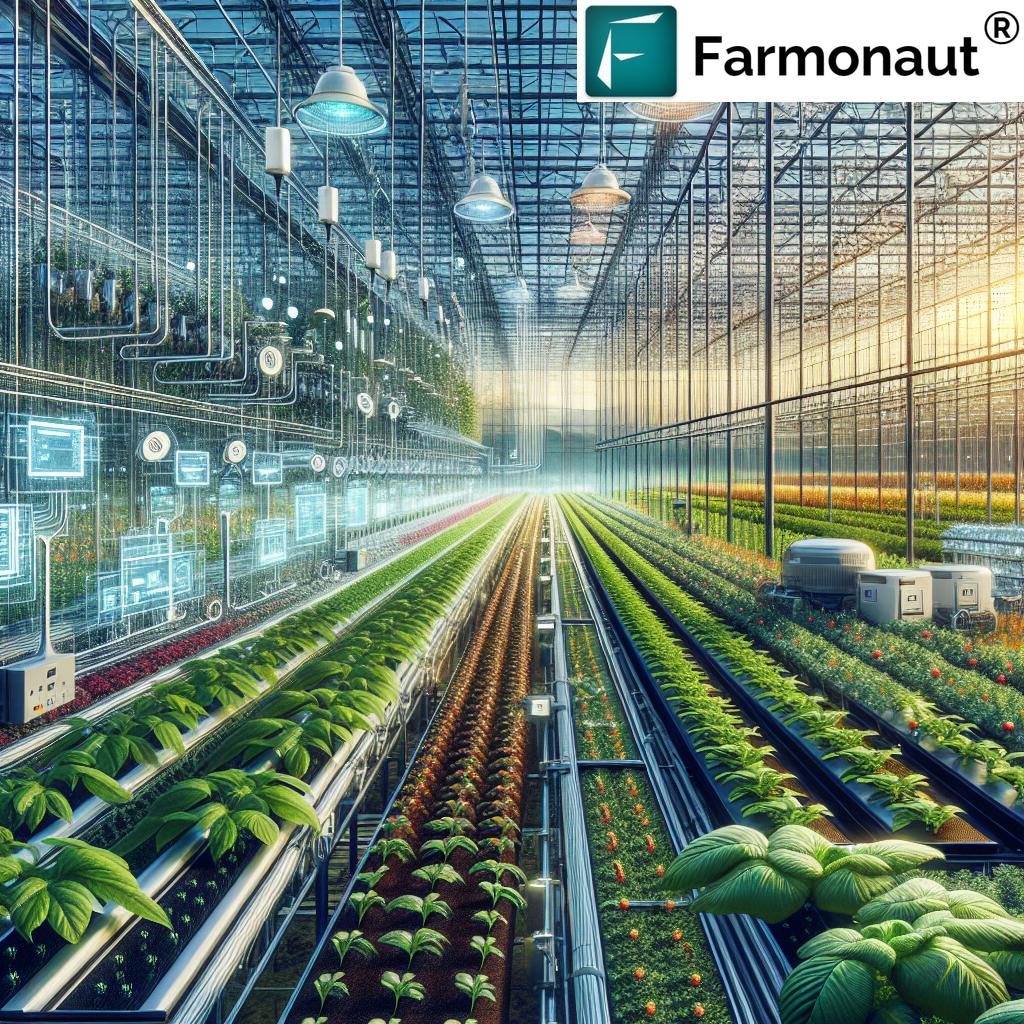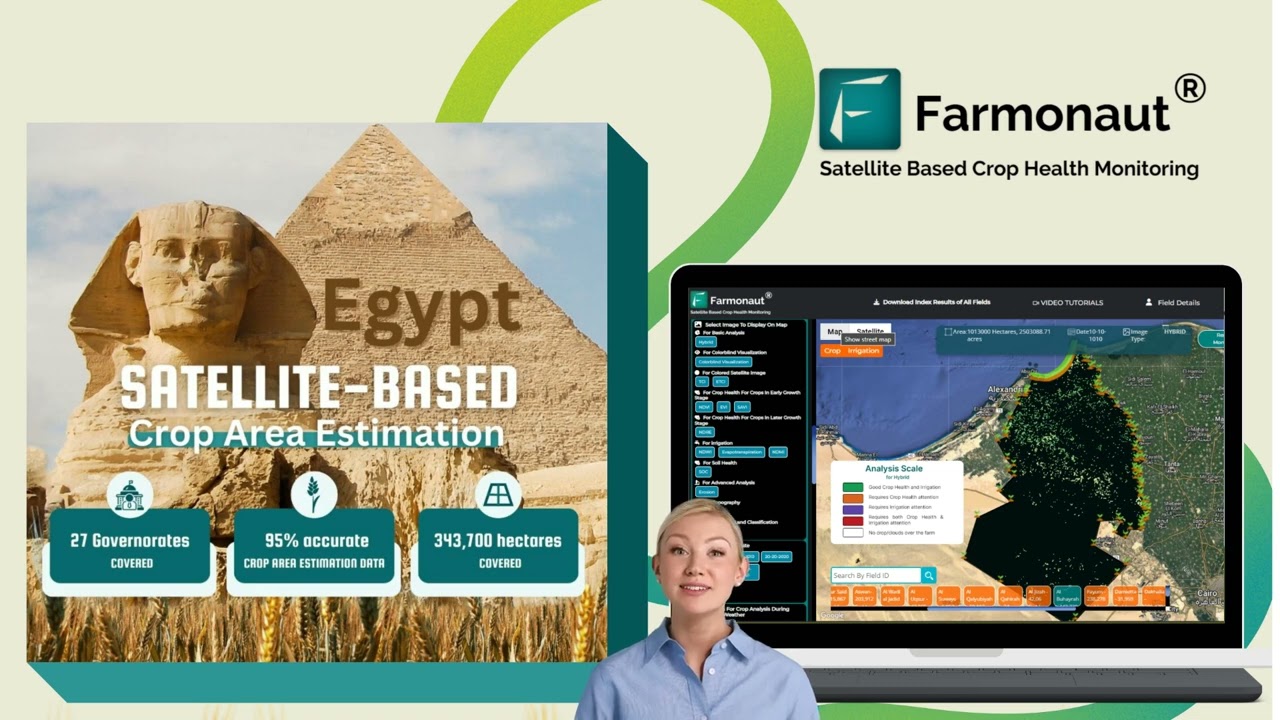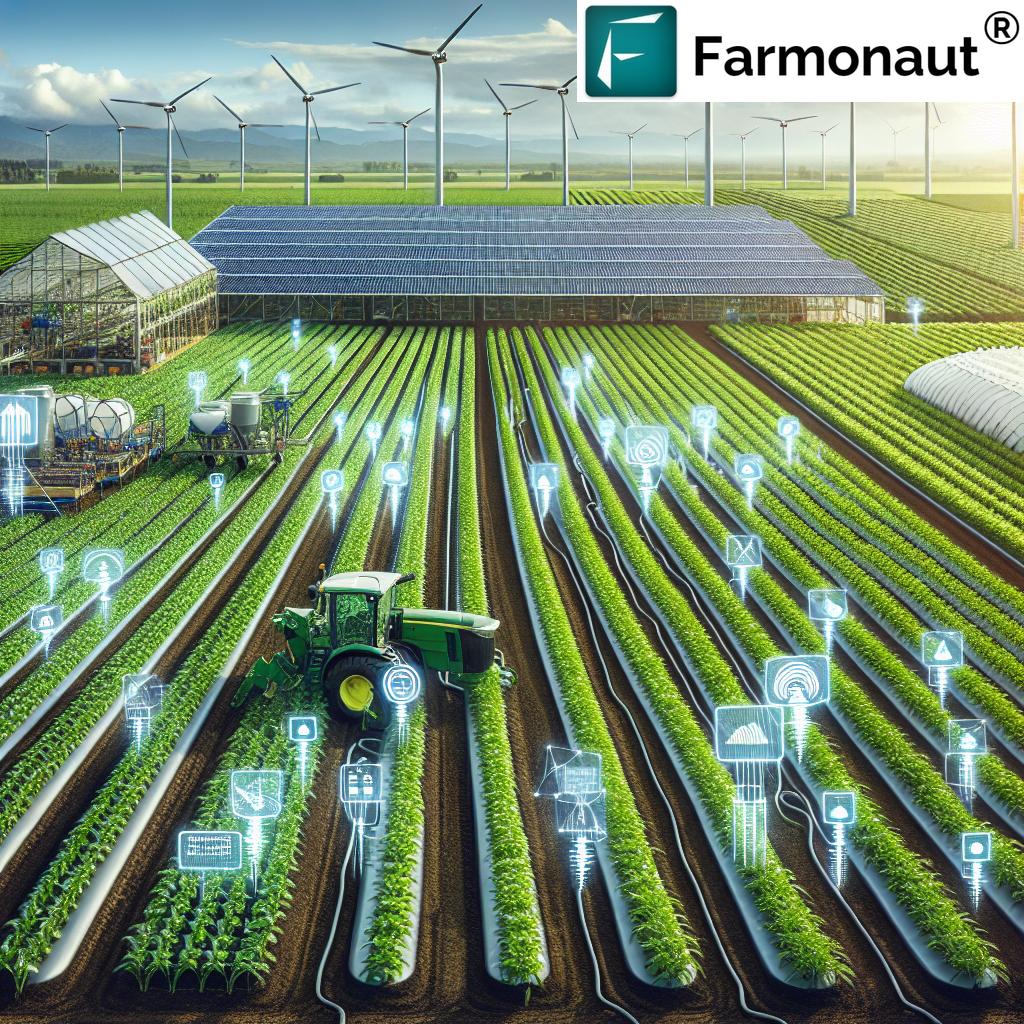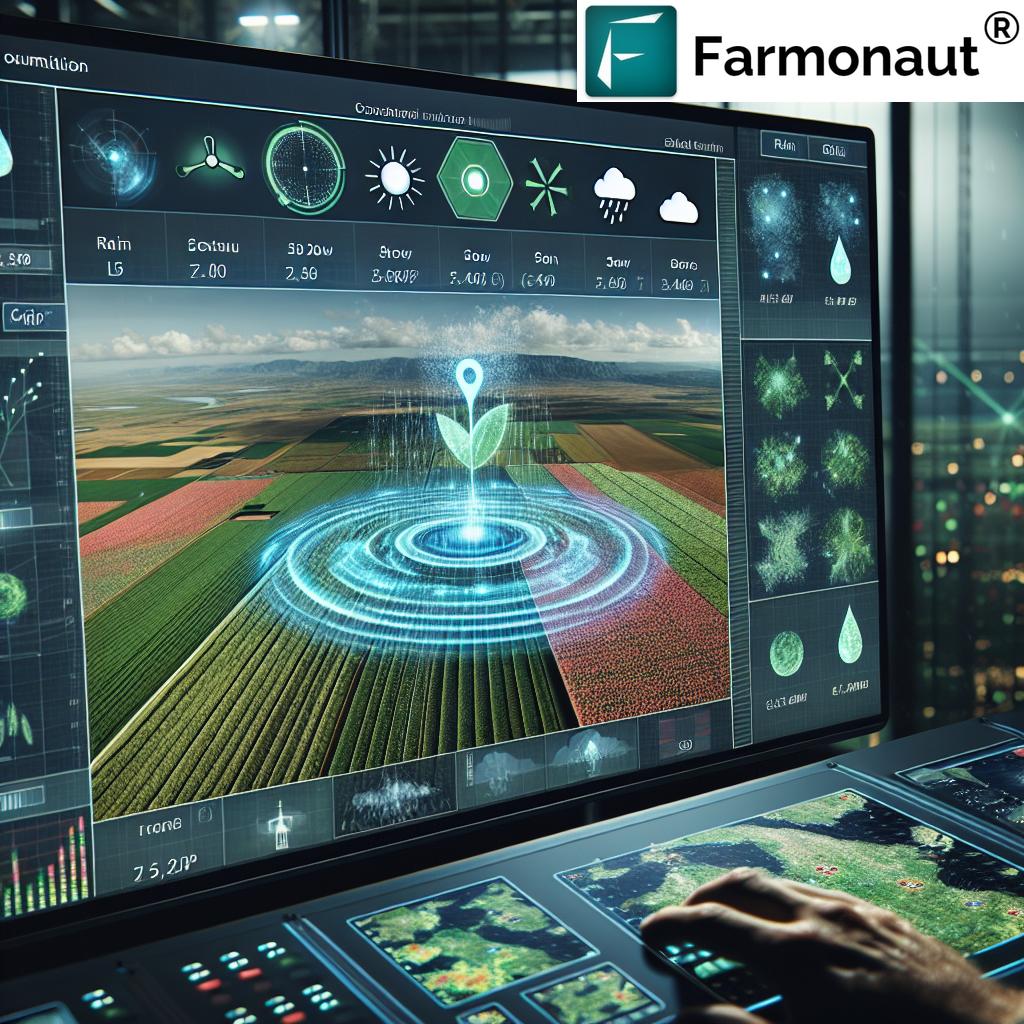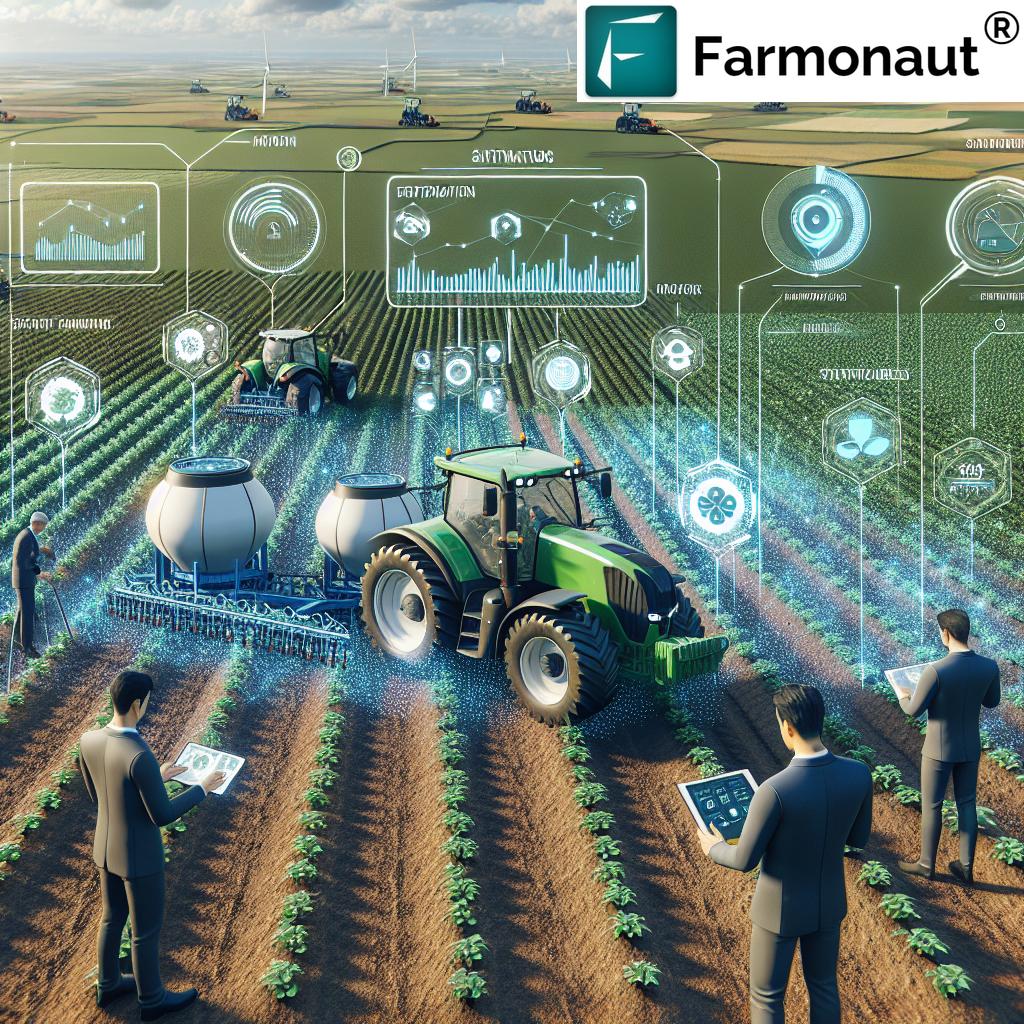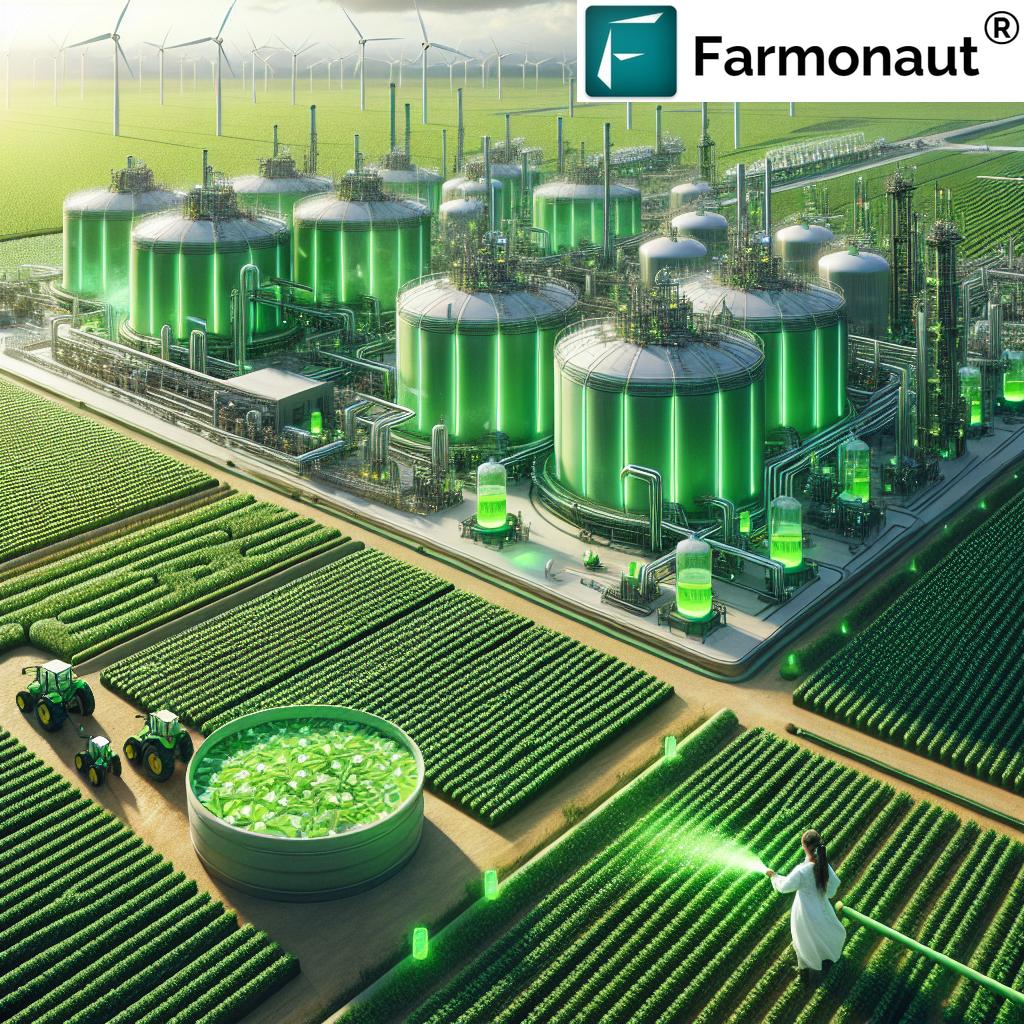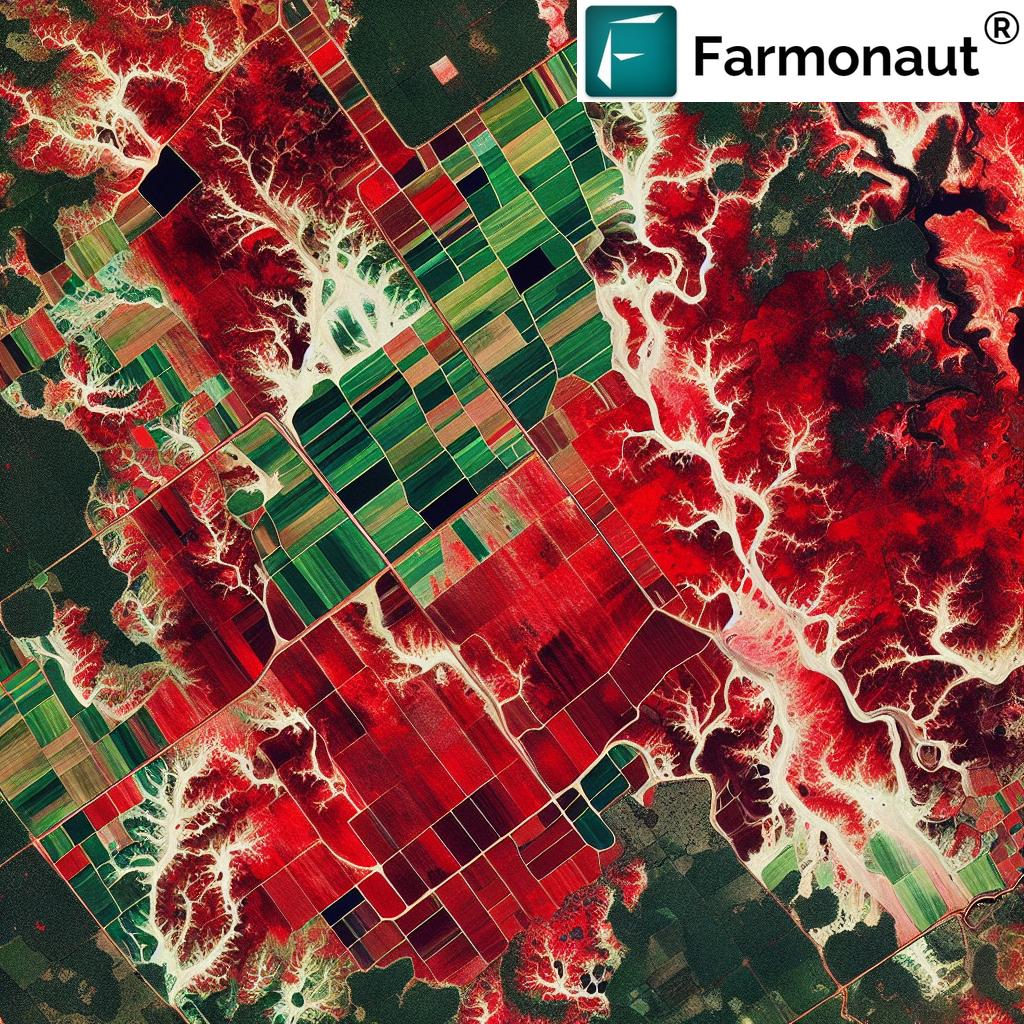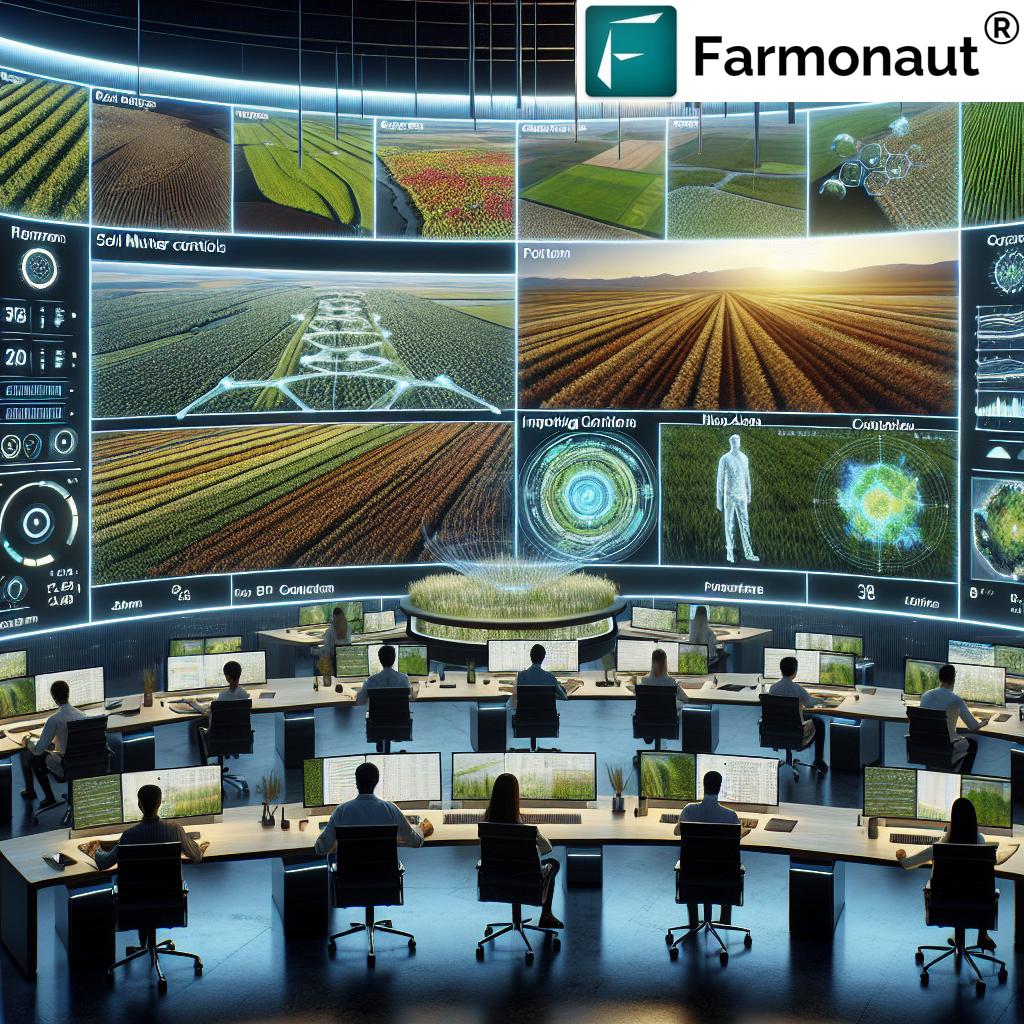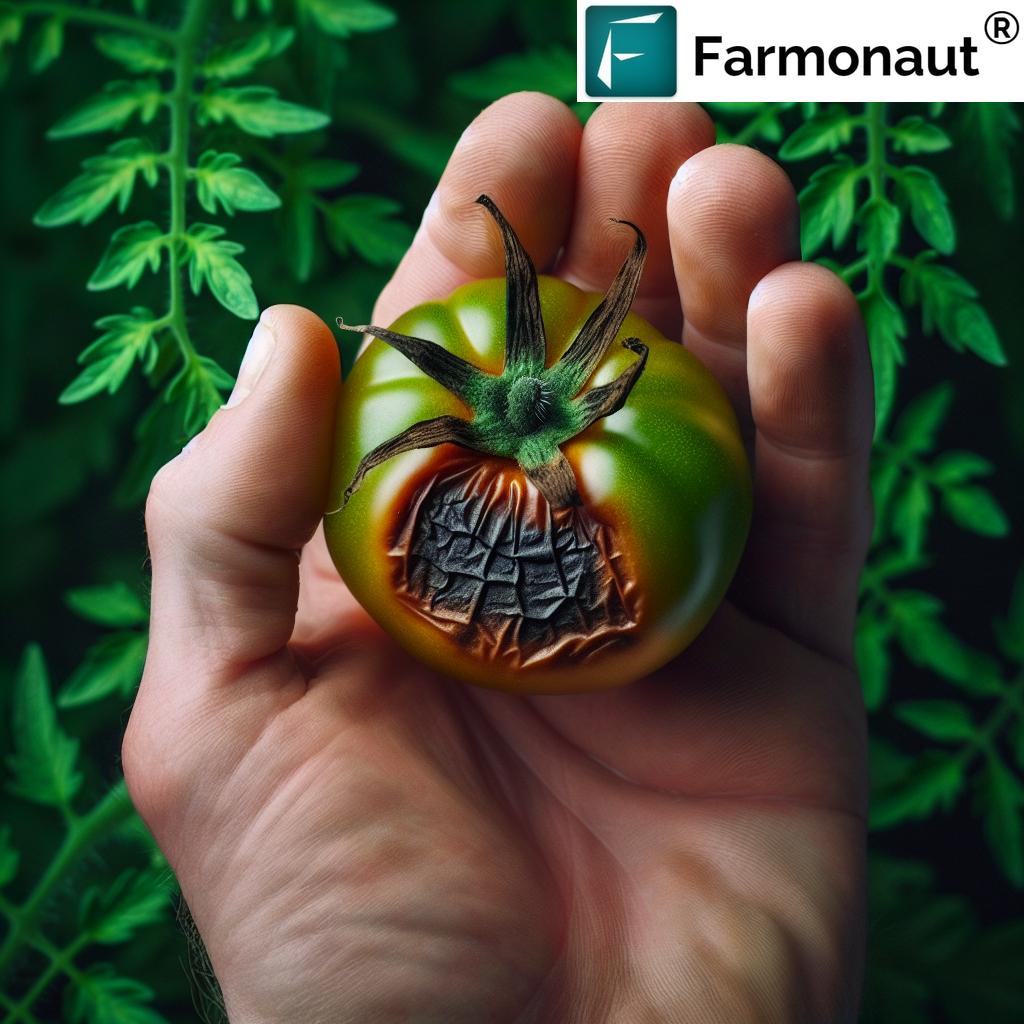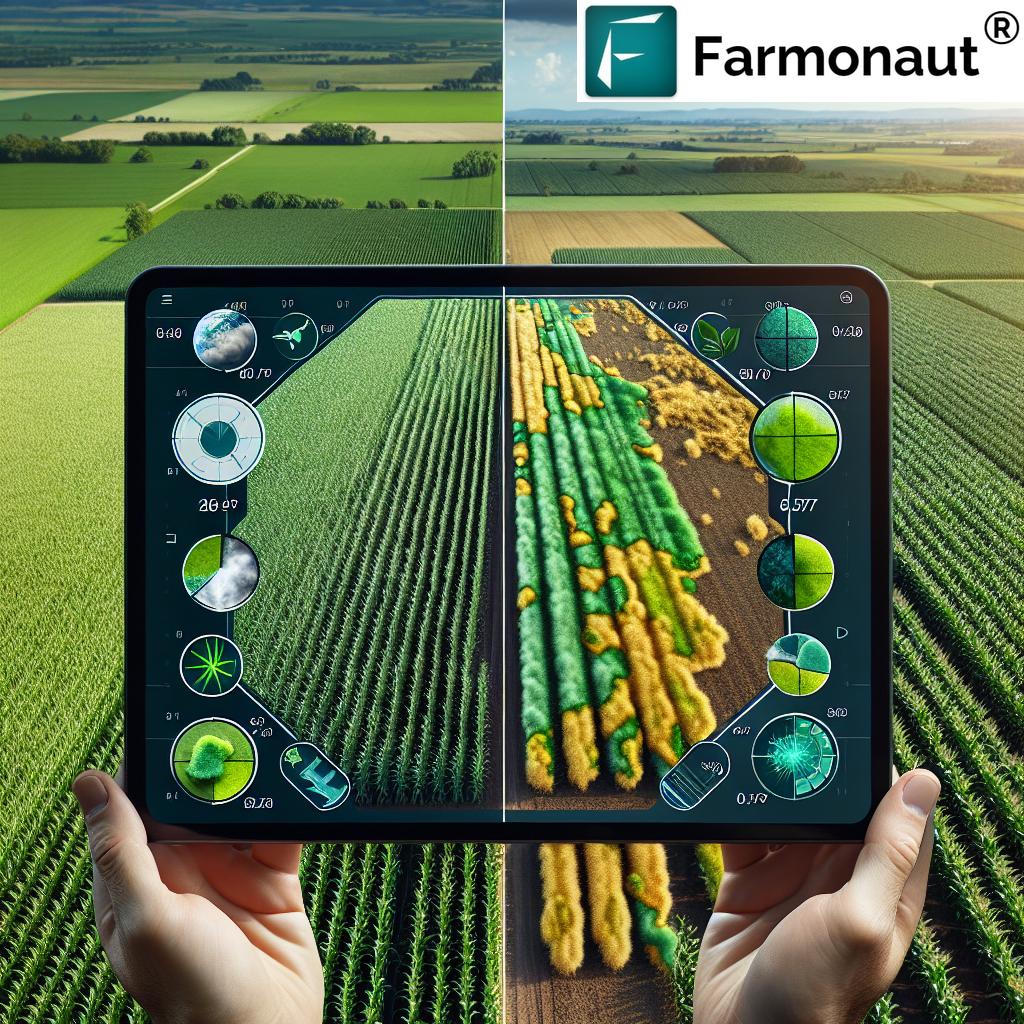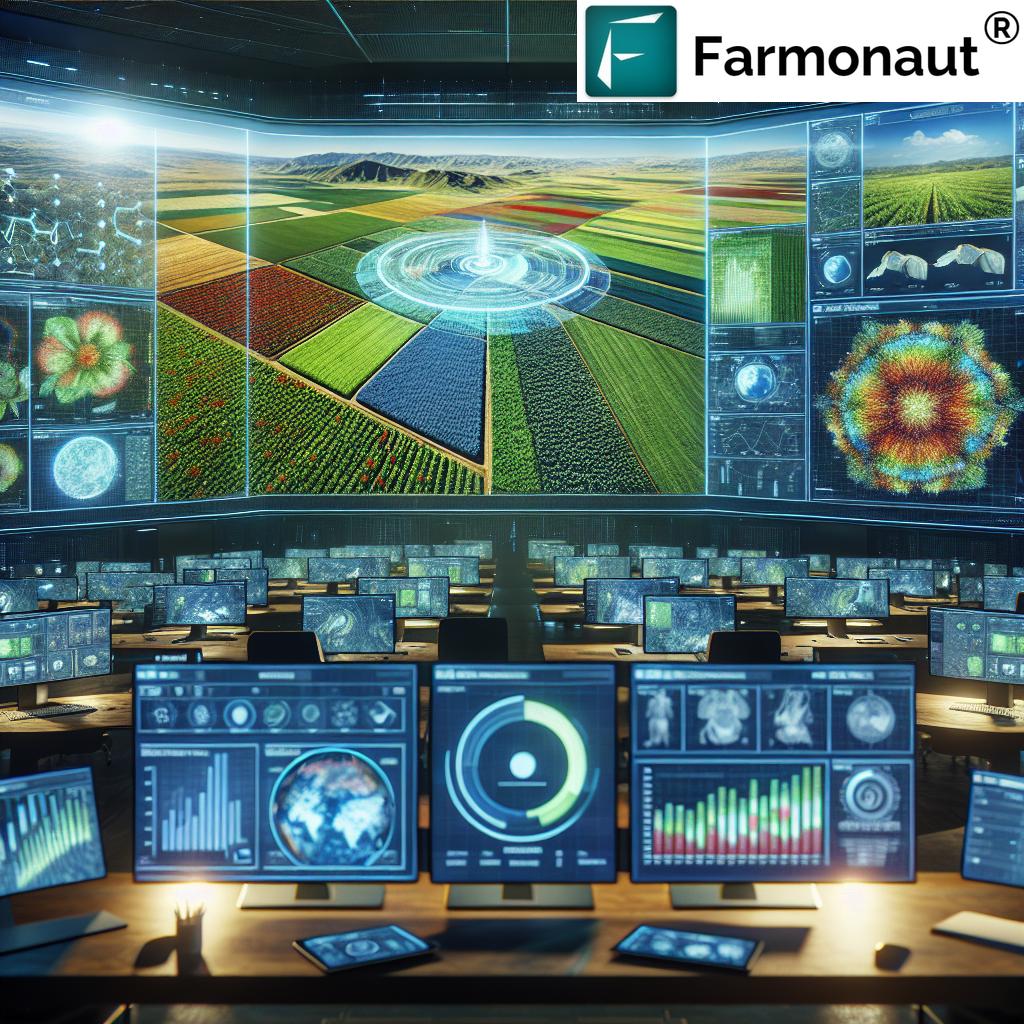Greenhouse Automation System: Skyrocket Your Yields Now!
Are you ready to transform your agriculture business and skyrocket your yields? The era of greenhouse automation systems is upon us. These smart innovations are powering a new age in modern farming—integrating advanced technologies, intelligent sensors, and AI-driven analytics to optimize greenhouse conditions, ensuring resource-efficient, sustainable agriculture, and delivering unmatched crop yields.
In this in-depth guide, we’ll explore everything from the foundational technologies to future-forward innovations in automated greenhouses, leveraging examples from Farmonaut’s cutting-edge solutions to show how you can harness data, automation, and AI for a new level of productivity and sustainability.
“Greenhouse automation can increase crop yields by up to 30% through precise climate and irrigation control.”
Understanding Greenhouse Automation: Key Concepts
Greenhouse automation signifies a quantum leap from traditional farming, enabling us to monitor, control, and optimize various aspects of the greenhouse environment using smart systems. By employing a combination of environmental sensors, actuators, data analytics, and AI algorithms, we can maintain an ideal microclimate for plant growth at all times, regardless of external conditions.
In essence, automated greenhouse solutions transform the way we approach crop production by:
- Regulating temperature, humidity, CO₂, and light precisely (environmental control)
- Automating irrigation and fertilization for efficient resource usage and improved crop health
- Integrating smart greenhouse technology and sensors for real-time monitoring and troubleshooting
- Applying advanced data analytics and AI in agriculture for proactive decision-making
Such solutions not only result in higher crop yields and better resource efficiency but also play a crucial role in advancing sustainable practices.
Key Components of Greenhouse Automation Systems
To fully realize the potential of resource-efficient agriculture, it’s essential to understand the critical components driving modern greenhouse automation systems.
Environmental Control in Greenhouses
Environmental control systems are at the heart of smart greenhouse technology. These systems allow us to monitor and regulate temperature, humidity, light levels, and CO₂ concentrations to create an optimal microclimate for plant growth.
- Temperature & Humidity Control: Automated heating, cooling, and humidification/dehumidification maintain stability for sensitive crops.
- Intelligent Lighting: Supplementary LED or HPS lights are dynamically adjusted based on real-time sensor data, ensuring plants get adequate light for optimal photosynthesis and healthy development.
- CO₂ Control: Systems inject or vent CO₂ as needed, promoting robust plant growth.
- Automated Ventilation: Fans, vents, or louvres modulate airflow to prevent hot spots and manage humidity, using real-time environmental data to optimize air exchange.
With advanced greenhouse sensors and monitoring, we can detect even minute changes in climate variables, maintain ideal plant conditions, and prevent loss or sub-optimal yield due to environmental fluctuations.
Learn more about data-driven environmental monitoring and plant advisory at Farmonaut’s Jeevn AI Advisory System.
Automated Irrigation and Fertigation
Water and nutrient management are critical for profitable greenhouse operations. Automated systems help us monitor soil moisture levels and deliver water and nutrients precisely where and when needed, increasing efficiency and eliminating the risks of overwatering or nutrient loss.
- Soil Moisture Sensors: Continuously track the root zone to trigger irrigation cycles only as required.
- Automated Fertigation: Fertilizer is dissolved in irrigation water and delivered in controlled doses, matching crop stages and minimizing runoff.
- Water-Saving Benefits: Smart sensors and automation can reduce water usage by up to 30–50% compared to manual methods.
By automating these processes, we conserve precious resources and promote sustainable greenhouse farming while maintaining superior yields.
Optimize irrigation with Farmonaut’s Large Scale Farm Management App, which provides holistic tools for data-driven water and nutrient management.
Pest and Disease Management with Smart Greenhouse Technology
Unchecked pest infestations or plant diseases can devastate crop yields. Integrated pest and disease management solutions utilize:
- Sensors and Cameras: Diagnose early signs of pest problems or disease outbreaks via automated monitoring.
- Data Analytics: AI systems analyze patterns to trigger rapid interventions—deploying natural predators, organic treatments, or targeted actions.
- Reduced Chemical Dependency: With precise detection, we minimize chemical pesticide usage, supporting sustainable farming practices and food safety.
Discover advanced pest and disease monitoring—get real-time satellite and AI insights with Farmonaut Apps for your greenhouse!
Analytics & Decision Support: The Brain of Automated Greenhouse Solutions
At the core of 21st-century greenhouse automation lies data analytics and decision support systems:
- Big Data Collection: Greenhouse sensors gather real-time data from every corner of the greenhouse—environmental readings, growth data, resource usage.
- Machine Learning Algorithms: These analyze trends, predict optimal planting schedules, anticipate pest/disease risks, and recommend resource adjustments.
- Automated Alerts: The system flags potential issues before they escalate, enabling us to tag and resolve threats proactively.
Access to AI-based crop health monitoring and advisory systems is seamless using the Farmonaut Platform. Our app guides farmers with actionable intelligence drawn from satellite and local greenhouse data.
Feature & Benefit Comparison Table: Smart Greenhouse Technology Components
| Technology/Component | Estimated Cost (USD) | Main Function | Automation Level | Potential Yield Increase (%) | Sustainability Impact |
|---|---|---|---|---|---|
| Automated Irrigation & Fertigation | $5,000–$15,000 | Automated water and nutrient delivery based on soil moisture and plant needs | High | 20–30% | Reduces water and fertilizer usage by 30–50% |
| Climate Control Sensors & Actuators | $2,000–$10,000 | Real-time monitoring and automatic regulation of temperature, light, CO₂, and humidity | Medium–High | 10–20% | Improves energy efficiency; lowers operational costs |
| AI Monitoring & Analytics Platforms | $1,000–$8,000 (software/licensing) | Data analytics, predictive modeling, and advisory for resource allocation | Very High | 15–25% | Optimizes pesticide/fertilizer use; early warnings for sustainability |
| Automated Ventilation & Airflow | $2,000–$7,000 | Maintains ideal airflow, controls humidity & temperature gradients | Medium | 5–15% | Reduces disease risk via better environment control |
| Smart Pest & Disease Detectors | $2,500–$9,000 | Real-time detection and response to pests and plant diseases | High | Up to 10% | Minimizes chemical usage and supports organic practices |
*Costs are indicative and may vary by scale and vendor; all percentages represent industry estimates for typical yield and resource improvements.
Benefits of Greenhouse Automation Systems
Embracing automation means revolutionizing our approach to resource management, crop yields, and sustainability. Some of the most compelling benefits include:
- Resource Efficiency: Automated greenhouses ensure that water, light, and nutrients are supplied at precise intervals, reducing waste and lowering operational costs. Automated irrigation alone can cut water usage by up to 30%.
- Enhanced Crop Yields and Quality: Controlled environments lead to healthier, more productive plants. Research and industry data point to yields increasing by 20–30% using smart greenhouse technology.
- Sustainability: Targeted use of organic treatments, minimized chemical fertilizers, and precision irrigation contribute to eco-friendly, sustainable farming methods.
- Labor Efficiency: Routine tasks—environmental monitoring, resource application, and even some harvesting—are automated. This allows our teams to focus on higher-level management and strategy.
- Consistency: Automation reduces human error, maintaining ideal conditions and substantially improving crop quality and uniformity.
“Smart sensors in greenhouses reduce water usage by nearly 50% while maintaining optimal plant growth conditions.”
Precision Agriculture and Satellite Insights: Farmonaut’s Role in Smart Greenhouse Technology
Although specialized automation hardware powers in-situ control, achieving truly optimized greenhouses requires a holistic, data-driven approach. That’s precisely where Farmonaut comes in—empowering global growers with:
- Satellite-Based Crop Health Monitoring: Farmonaut leverages multispectral satellite imaging to monitor crop growth, soil moisture, and vegetation vigor on a large or granular scale.
- AI and Machine Learning Advisory: The Jeevn AI System examines environmental data, weather patterns, and satellite imagery to predict risks, recommend interventions, and optimize management practices.
- Blockchain Traceability: Ensuring that every stage of the crop’s journey is transparent, secure, and verifiable, which is critical for premium or certified markets.
- Resource Management Tools: Fleet tracking and operational analytics help large growers coordinate labor, machinery, and logistics for maximum efficiency.
- Carbon Footprinting: Real-time tracking helps operators assess and reduce greenhouse emissions, meeting market and regulatory sustainability standards. Check out Farmonaut’s Carbon Footprinting Solution for more information.
All these features are available via Android, iOS, and Web Apps as well as an easy-to-integrate Farmonaut API and API Developer Docs. This democratizes access to:
- Affordable, accurate precision agriculture tools
- Real-time and remote monitoring for any location
- Automated analytics and advisory for superior, data-driven decision-making
If you manage large estates or want streamlined operations, explore Farmonaut’s Fleet Management Suite for resource and operational efficiency.
Farmonaut is not a marketplace, manufacturer/seller, or regulator, but your technology partner for affordable data-driven farm management and transparent, sustainable agricultural practices worldwide.
Challenges and Considerations in Automated Greenhouse Solutions
Despite the advancements and significant benefits, several challenges need to be considered when adopting greenhouse automation systems:
- Initial Investment: Adopting automation technologies can be capital-intensive, especially for small- and mid-scale greenhouses. However, the practical ROI is strong owing to long-term resource and yield benefits.
- Technical Complexity: Operation and maintenance demand some technical expertise. While many systems are user-friendly, regular monitoring and troubleshooting are essential.
- Data Security: IoT-based greenhouse management brings connectivity risks. Protecting sensitive farm data and upholding cybersecurity is now critical.
- Integration and Compatibility: Combining systems (e.g., sensors, climate controls, and AI platforms) from various manufacturers often requires careful planning to achieve seamless automation.
Future Trends in Greenhouse Automation
As both the pressure and expectations on agriculture grow, new technologies promise to take automated greenhouses even further.
AI in Agriculture and IoT-Based Greenhouse Management
- Artificial Intelligence: AI in agriculture (such as machine learning and computer vision) will deepen its role, automating more nuanced tasks—like complex disease detection, automated harvest readiness checks, and even AI-driven climate tweaking.
- IoT Expansion: As the Internet of Things proliferates, we’ll see an explosion in low-cost, wireless greenhouse sensors capable of monitoring minute environmental and plant health changes for hyper-granular control.
- Blockchain for Supply Chain Integrity: Farmonaut’s Traceability Solutions utilize blockchain, reinforcing food provenance and transparency for retailers and consumers alike.
Sustainable Energy and Robotics in Greenhouses
- Sustainable Energy Solutions: Renewable energy, especially solar power, is being rapidly adopted to reduce operational costs and emissions, exemplified by innovative greenhouse projects worldwide.
- Robotics: Planting, pruning, weeding, and autonomous harvesting robots are becoming everyday reality—cutting labor costs while ensuring high-precision tasks are handled at scale.
- Integrated Advisory: Decision support platforms, like Farmonaut, continue to bridge field-level automation and strategic farm management, enhancing the value of data collected across systems.
Get Started with Farmonaut: Upgrade Your Greenhouse Management
The time to embrace automation is now. Farmonaut’s affordable, scalable platform bridges the world’s most advanced data, automation, and analytics with every grower, farm, and agribusiness.
- Download the Farmonaut App: Our web, Android, and iOS platforms put real-time crop health, weather forecasts, irrigation, and AI-based advice in your hands.
- Streamlined Loans & Insurance: Agricultural financing is easier with Farmonaut’s Crop Loan and Insurance tools—offering satellite verification for stress-free paperwork and faster approvals.
- Developer-Friendly APIs: For tailored solutions, integrate our Farmonaut Satellite and Weather API and refer to our developer docs.
- Scalable for Any Operation: With large-scale management and plantation advisory tools, Farmonaut serves everyone from individual greenhouse owners to the largest agriculture enterprises.
Frequently Asked Questions (FAQ)
What is a greenhouse automation system?
A greenhouse automation system is a technology-driven setup that uses sensors, actuators, AI, and analytics to automatically monitor, regulate, and optimize environmental factors such as temperature, light, humidity, CO₂, irrigation, and nutrient delivery in a greenhouse.
How much can I increase my crop yields with greenhouse automation?
Industry research shows that automated greenhouse solutions can boost yields by 20–30% compared to conventional methods due to precise resource management and optimal growth conditions.
What is the role of AI in agriculture for greenhouses?
AI in agriculture processes environmental and crop data to predict risks, suggest optimal interventions (like irrigation or pest control), and automate key decision-making, maximizing efficiency and minimizing input waste.
Are greenhouse automation systems suitable for small-scale growers?
Yes! While some initial investment is required, affordable options (including Farmonaut’s data-driven services) empower smallholders with access to precision management and real-time monitoring—no expensive local hardware needed.
Can automation help reduce the use of chemical pesticides and fertilizers?
Absolutely! Integrated pest and disease management and smart fertigation systems deploy inputs only when and where needed, enabling sustainable, eco-friendly practices and minimizing excessive chemical use.
How does Farmonaut support greenhouse automation?
Farmonaut offers satellite-driven crop monitoring, AI-based advisory, blockchain traceability, and resource management tools accessible via web and mobile apps—providing actionable insights for smarter, more efficient greenhouse management globally.
Learn more about our value proposition and feature set above, or explore our large-scale management tools.
Is my data safe when using connected automation systems?
Data security is a priority. Always use platforms like Farmonaut that adopt stringent security protocols, keep systems updated, and ensure that analytics pipelines are encrypted and protected.
Conclusion: The Path Towards Smart, Sustainable Greenhouse Farming
Greenhouse automation systems are more than a trend—they’re the foundation for the future of agriculture. By integrating advanced sensors, AI, data analytics, and smart controls, we unlock the full potential of year-round, resource-efficient, high-yield food production.
As technology evolves, so too will the capabilities of our greenhouses: from renewable energy and robotics to hyper-personalized AI-driven decision support. With solutions like Farmonaut, even the smallest grower can compete and thrive, ensuring that the food we produce is abundant, sustainable, and of the highest quality.
The future is bright—and now is the time to embrace automated greenhouse solutions for optimal yields, sustainable practices, and a resilient agricultural ecosystem.


